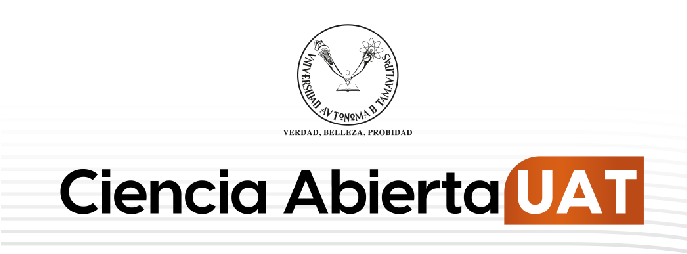Efectos del sulfato de cobre y Romet®-30 en células mucosas branquiales del bagre Ictalurus punctatus
DOI:
https://doi.org/10.29059/cvpa.v1i1.6Palabras clave:
sulfato de cobre, histoquímica, Ictalurus punctatus, células mucosasResumen
Con el objetivo de estudiar los efectos del tratamiento con sulfato de cobre y Romet®-30 sobre el número y composición de células mucosas branquiales (neutras y ácidas) se expusieron alevines de bagre de canal (Ictalurus punctatus) sanos durante once semanas a tratamientos profilácticos intermitentes de sulfato de cobre (en baños) o Romet®-30 (en el alimento). Cada semana se tomaron muestras del segundo arco branquial, se procesaron histológicamente y se tiñeron con ácido peryódico Schiff (PAS) y azul alcián a pH de 2.5. Los resultados del estudio mostraron un incremento significativo en las células mucosas con reacción ácida de los peces expuestos al sulfato de cobre, lo cual sugiere la respuesta del tejido al compuesto.
Citas
Benktander, J., Sundh, H., Sundell, K., Murugan, A. V. M., Venkatakrishnan, V., Padra, J. T., Kolarevic, J., Terjesen, B. F., Gorissen, M., & Lindén, S. K. (2021). Stress impairs skin barrier function and induces α2-3 linked N-acetylneuraminic acid and core 1 O-glycans on skin mucins in Atlantic Salmon, Salmo salar. International Journal of Molecular Sciences, 22(3), 1488. https://doi.org/10.3390/ijms22031488
Cabillon, N. A. R., & Lazado, C. C. (2019). Mucosal barrier functions of fish under changing environmental conditions. Fishes, 4(1), 2. https://doi.org/10.3390/fishes4010002
Carvalho, T. L. A. B., Nascimiento, A. A., Gonçalves, C. F. S, Santos, M. A. J., & Sales A. (2020). Assessing the histological changes in fish gills as environmental biodicators in Paraty and Sepetiba bays in Rio de Janeiro, Brazil. Latin American Journal of Aquatic Research, 48(4), 590-601. http://dx.doi.org/10.3856/vol48-issue4-fulltext-2351
Dang, M., Pittman, K., Sonne, C., Hansson, S., Bach, L., Søndergaard, J., Stride, M., & Nowak, B. (2020). Histological mucous cell quantification and mucosal mapping reveal different aspects of mucous cell responses in gills and skin of shorthorn sculpins (Myoxocephalus scorpius). Fish & Shellfish Immunology, 100, 334-344. DOI: 10.1016/j.fsi.2020.03.020
De Kinkelin, P., Michel, Ch., & Ghittino, P. (1991). Tratado de las enfermedades de los peces. Editorial Acribia.
Gao, Y., Qiang, L., Zhang, L., Tan, R., Wang, X., & Yu, Y. (2023). Mucosal and humoral responses of javelin goby, Synechogobius hasta, after immersion vaccination using killed Vibrio vulnificus bacterin. Aquaculture International, 31(2), 1097-1113. https://doi.org/10.1007/s10499-022-01017-z
Haddeland, S., Lazado, C. C., Merkin, G. V., Myre, O. J., Okubamichael, M. A., Pedersen, L., & Pittman, K. (2021). Dynamic morphometrics of mucous cells reveal the minimal impact of therapeutic doses of peracetic acid on Atlantic salmon gill health. Aquaculture, 534, 736315. https://doi.org/10.1016/j.aquaculture.2020.736315
Han, F. X., Hargreves, J. A., Kingery, W. L., Huggett, D. B., & Schlenk, D. K. (2001). Accumulation, distribution and toxicity of copper in sediments of catfish ponds receiving periodic copper sulfate applications. Journal of Environmental Quality, 30(3), 912-919. https://doi.org/10.2134/jeq2001.303912x
Harris, J. E., Watson, A., & Hunt, S. (1973). Histochemical analysis of mucous cells in the epithelium of brown trout Salmo trutta L. Journal of Fish Biology, 5(3), 345-351. https://doi.org/10.1111/j.1095-8649.1973.tb04463.x
Kim, S. G., & Kang, J. C. (2004). Effect of dietary copper exposure on accumulation, growth and hematological parameters of the juvenile rockfish, Sebastes schlegeli. Marine Environmental Research, 58(1), 65-82. https://doi.org/10.1016/j.marenvres.2003.12.004
Khangarot, B. S., & Tripathi, D. M. (1991). Changes in humoral and cell-mediated responses and in skin and respiratory surfaces of catfish, Saccobranchus fossilis, following copper exposure. Ecotoxicology and Environmental Safety, 22(3), 291-308. https://doi.org/10.1016/0147-6513(91)90080-9
Lazado, C. C., Haddeland, S., Timmerhaus, G., Berg, R. S., Merkin, G., Pittman, K., & Pedersen, L. F. (2020). Morphomolecular alterations in the skin mucosa of Atlantic salmon (Salmo salar) after exposure to peracetic acid-based disinfectant. Aquaculture Reports, 17, 100368. https://doi.org/10.1016/j.aqrep.2020.100368
Marinović, Z., Miljanović, B., Urbányi, B., & Lujić, J. (2021). Gill histopathology as a biomarker for discriminating seasonal variations in water quality. Applied Sciences, 11(20), 9504. https://doi.org/10.3390/app11209504
Monteiro, S. M., Fontainhas-Fernandes, A., & Sousa, M. (2010). An immunohistochemical study of gill epithelium cells in the Nile tilapia, Oreochromis niloticus. Folia Histochemica et Cytobiologica, 48(1), 112-121. https://doi.org/10.2478/v10042-008-0105-5
Moosavi, M. J., & Shamushaki, V-A. J. (2015). Effects of different levels of copper sulfate on growth and reproductive performances in guppy (P. reticulate). Journal of Aquaculture, Research & Development, 6(2), 1-4. https://www.doi.org/10.4172/2155-9546.1000305
Mowry, R. W. (1956). Alcian blue techniques for the histochemical study of acidic carbohydrates. Journal of Histochemistry and Cytochemistry, 4, 407-408.
Nimet, J., Neves, M. P., Viana, N. P., Amorim, J. P. A., & Delariva, R. L. (2020). Histopathological alterations in gills of a fish (Astyanax bifasciatus) in neotropical streams: negative effects of riparian forest reduction and presence of pesticides. Environmental Monitoring and Assessment, 192(58). https://doi.org/10.1007/s10661-019-8030-y
Osório, J., Stiller, K. T., Reiten, B. K., Kolarevic, J., Johansen, L-H., Afonso, F. & Lazado, C. C. (2022). Intermittent administration of peracetic acid is a mild environmental stressor that elicits mucosal and systemic adaptive responses from Atlantic salmon post-smolts. BMC Zool, 7(1). https://doi.org/10.1186/s40850-021-00100-x
Ostaszewska, T., Chojnacki, M., & Kamaszewski, M. (2016). Histopathological effects of silver and copper nanoparticles on the epidermis, gills, and liver of Siberian sturgeon. Environmental Science of Pollution Research, 23(2),1621-1633. https://doi.org/10.1007/s11356-015-5391-9
Palma Leotta, M. E., Caliri, M. N., & Cáceres-Jiménez, A. R. R. (2017). Caracterización histológica e histoquímica de branquia, hígado y riñón de perca criolla (Percichthys trucha, Valenciennes, (1833) para su uso en biomonitoreo ambiental. Acta Microscopica, 26(1), 32-45
Patología en Acuicultura (2023). Hiperplasia de células mucosas branquiales en Salmón del Atlántico (Salmo salar): Histopatología. Recuperado el 10 de Mayo 2023 de https://bit.ly/41aPaLc.
Pereira, B. F., & Caetano, F. H. (2009). Histochemical technique for the detection of chloride cells in fish. Micron, 40(8), 783-786. https://doi.org/10.1016/j.micron.2009.07.010
Persson, D., Bjørgen, H., Figenschou, A., Hillestad, L., Koppang, E. O., Nødtvedt, A., &Stormoen, M. (2021). Variation in mucous cell numbers in gills of Atlantic salmon (Salmo salar) presmolt in commercial freshwater farms in Norway. Journal of Fish Diseases, 44(1), 25-32. https://doi.org/10.1111/jfd.13263
Reverter, M., Tapissier-Bontemps, N., Lecchini, D., Banaigs, B., & Sasal, P. (2018). Biological and ecological roles of external fish mucus: a review. Fishes, 3(4), 41. https://doi.org/10.3390/fishes3040041
Richardson, L. B., Burton, D. T., Block, R. M., & Stavola, A. M. (1983). Lethal and sublethal exposure and recovery effects of ozone-produced oxidants on adult white perch (Morone americana Gmelin). Water Research,17(2), 205-213. https://doi.org/10.1016/0043-1354 (83)90101-X
Rowland, S. J., Mifsud, Ch., Nixon, M., Read, P., & Landos, M. (2009). Use of formalin and copper to control icththyophthiriosis en the Australian freshwater fish silver perch (Bidyanus bidyanus Mitchell). Aquaculture Research, 40(1), 44-54. https://doi.org/10.1111/j.1365-2109.2008.02061.x
Sánchez, J. G., Speare, D. J., & Johnson, G. J. (1997). Morphometric and histochemical assessement of the branquial tissue response of rainbow trout, Onchorhynchus mykiss (Walbaum), associated with chloramine-T treatment. Journal of Fish Diseases, 20(5), 375-381. https://doi.org/10.1046/j.1365-2761.1997.00312.x
Smith, S. A., Newman, S. J., Coleman, M. P., & Alex, C. (2018). Characterization of the histologic appearance of normal gill tissue using special staining techniques. Journal of Veterinary Diagnostic Investigacion, 30(5), 688-698. https://doi.org/10.1177/1040638718791819
Tavares-Dias, M., Ferreira, J. S., Affonso, E. G., Ono, E. A., & Martins, M. L. (2011). Toxicity and effects of copper sulfate on parasitic control and hematological response of tambaqui Colossoma macropomum. Boletim do Instituto de Pesca, 37(4), 355-365.
Tavares-Dias, M. (2021). Toxic, physiological, histomorphological, growth performance and antiparasitic effects of copper sulphate in fish aquaculture. Aquaculture, 535, 736350. https://doi.org/10.1016/j.aquaculture.2021.736350
van den Heuvel, M. R., Power, M., Richards, J., Mackinnon, M., & Dixon, D. G. (2000). Disease and gill lesions in yellow perch (Perca flavescens) exposed to oil sands mining associated waters. Ecotoxicology and Environmental Safety, 46(3), 334-341. https://doi.org/10.1006/eesa.1999.1912

Publicado
Cómo citar
Número
Sección
Licencia
Derechos de autor 2023 Ciencias Veterinarias y Producción Animal

Esta obra está bajo una licencia internacional Creative Commons Atribución-NoComercial-CompartirIgual 4.0.






